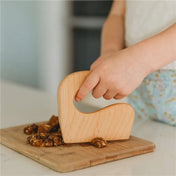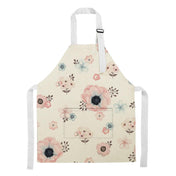Discover the best activities to develop fine motor skills for your little ones
Helping your little one develop their fine motor skills is essential to setting them up for success – but it can also be fun! Discover a range of fun and engaging ways to encourage your child’s fine motor skill development.
Firstly, what are fine motor skills?
Put simply, fine motor skills involve using the small muscles in our hands and fingers to manipulate objects, which requires coordination and control. Fine motor skills are the building blocks for essential daily tasks like writing, eating, drawing and even getting dressed!
How does a child develop their fine motor skills?
As a baby, your child will start developing their fine motor skills with simple activities like grasping items and holding small toys. Babies start developing fine motor skills with activities like grabbing and pinching, but there are many fun, imaginative activities such as puzzles, blocks and games for improving these skills as they grow up.
Why is it important to encourage the development of fine motor skills in preschoolers?
In their first years of school, your child will be exposed to important tasks like colouring and writing which require the use of fine motor skills. Preschool fine motor activities will help them develop these skills and adjust to early schooling — plus, it’ll open up a whole new world of exciting playtime opportunities for them!
Examples of fine motor skills for preschoolers and kindergarteners

There are several milestones for building fine motor skills in a child’s early years. Children will usually try using small items like crayons in their first 18 months and by 2 to 3 years, they’ll likely be ready to draw. However, it’s always important to remember that every child develops at their own pace and will hit these milestones at different times.
The main fine motor skills your child will develop in kindergarten are:
The Pincer Grasp
Hand-Eye Coordination
Reach, Grasp, and Release
Stacking skills
The Pincer Grasp
The pincer grasp is the ability to hold something between your thumb and pointer finger. Most children start developing this skill at around 9-10 months old, but they’ll continue to improve their pincer grasp well into their schooling years!
As your child begins to do more things independently, they’ll need to develop the pincer grasp to perform tasks like buttoning their shirt, tying shoelaces and holding a pencil correctly. This is something even adults struggle with if not taught correctly!
By their kindergarten years, your child will likely be comfortable picking up and holding most small items. While many toddlers are entertained by simply picking up and holding new items, kindergarten-aged kids need more exciting activities to hold their attention.
Hand-Eye Coordination
Hand-eye coordination is one of the most important skills we learn in life. It refers to our ability to complete actions with our hands just by using our eyesight. It’s the relationship between our hands and our eyes that makes day-to-day activities possible.
From ages 3 to 5, your child will show a preference for their right or left hand and continue to build their depth perception. Activities that let them control an object will help improve their understanding of direction (up, down, left and right) and their hand-eye coordination.
Reach, Grasp, Release
Reach, Grasp and Release activities, also known as controlled voluntary release, are an important sign of motor development. Like the pincer grasp, this skill begins developing when your child is just a few months old.

A simple way to build this skill is to practice picking an item up and putting it down in another spot. For example, you can introduce this activity by getting your child to pick up and put away their stacking blocks — this helps them develop their fine motor skills while keeping your floors toy-free!
Stacking Skills
Block stacking improves several fine motor skills at once, including the pincer grasp (how do I hold this block?), reach, grasp and release (how do I put this block down?) and hand-eye coordination (how do I get the block onto this stack?). Stacking blocks are a hit with kids and parents alike and can provide years of entertainment and educational value for your children.

Our top 10 fine motor activities for kindergarten kids
While some activities to develop fine motor skills focus on one building one skill, others will help your little ones develop multiple skills at the same time! We’ve put together a breakdown of our favourite fine motor activities for kindergarteners below.
1.Wooden knob puzzles
Wooden toys like knob puzzles are a great activity for strengthening the pincer grasp while teaching problem-solving skills. Your child will practice lifting small pieces and matching them to the right hole based on their shape. As a bonus, you can teach your child to name each shape as they assemble the puzzle to help them learn their shapes!

Fine motor skills used: Pincer grasp; Reach, grasp, release
2: Colouring-in
Colouring kits are a great way to strengthen the pincer hold and improve your child’s penmanship skills in kindergarten. Colouring sets with stickers are also great as peeling stickers helps your child build dexterity in their fingers. Some colouring sets can be used as posters after they’re completed, making a fun addition to your child’s room and rewarding them with a fun piece of art for their work!

Fine motor skills used: Pincer grasp
3.Tube labyrinths
Tube labyrinths require your child to manoeuvre a small ball through an obstacle course inside a tube by rotating it. Your child must also avoid dropping the ball into holes dotted across the surface, providing hours of fun and a rewarding challenge that can be repeated to their heart’s content. Tube labyrinths are great for hand-eye coordination, as they require your child to coordinate their hand movements while focussing on the ball rather than their fingers.


Fine motor skills used: Hand-eye coordination
4. Tweezer toys
Toy tweezers are one of the most popular choices for parents looking to improve their child’s pincer grip and hand-eye coordination. Toy tweezers need to be held between the thumb and finger and many games include tweezers as part of their rules!

Fine motor skills used: Pincer grasp; Hand-eye coordination

Fine motor skills used: Pincer grasp; Hand-eye coordination
5. Wooden building blocks
Building blocks are one of the first toys introduced to toddlers, but it’ll be years before your child outgrows the simple thrills of assembling their latest masterpiece! Advanced building blocks with connecting joints let imaginations run wild. They’re a hit with kindergarten students as they add an extra layer of fun while — pardon the pun — building their reach, grasp and release skills.

Fine motor skills: Stacking skills; Reach, grasp, release
6. Balancing games
Balancing covers the whole spectrum of fine motor skills for preschoolers. For example, this Moose Balancing Game requires your child to roll a dice to choose each block to be added to the wooden moose. This requires patience, hand-eye coordination and stacking skills to ensure the moose doesn’t topple over if placed incorrectly. This also builds valuable problem-solving skills, perfect for kindergarten students.

Fine motor skills: Hand-eye coordination; Pincer grasp; Reach, grasp, release; Stacking skills
7. Jigsaw puzzles
If you want to improve your child’s problem-solving skills and pincer grasp, look no further than a good old jigsaw puzzle. Jigsaws are a great way to build patience and logical thinking skills in kindergarten students before they enter school. Plus, they’ll get to look at a cool picture when they’re finished!

Fine motor skills: Pincer grasp
8. Counting stairs
Improve grasping skills and hand-eye coordination with maths-based counting stairs, great for introducing kindergarten students to simple mathematics! Counting stairs that include strings are also good for developing the pincer grasp, as they require your child to carefully thread each piece along the string, a skill that hones multiple fine motor abilities at once.

Fine motor skills: Hand-eye coordination; Pincer grasp; Reach, grasp, release
9. Shape sorters
These handy shape sorters are great for little ones who still need a little help with their shapes and building their stacking and reach, grasp and release skills while helping with colour and shape recognition. Shape sorting cubes are more advanced thanks to their five-sided design (including the lid) and provide an easy storage solution, so those little shapes won’t end up littering your floor!

Fine motor skills: Stacking skills; Reach, grasp, release
10. 4 in a row
There’s a reason why some games never go out of style! 4 in a row is fun and educational for kids and adults. The goal is to block your opponent from getting 4 coloured discs in a row horizontally, vertically or diagonally. This game will teach your little ones how to grasp and release small objects and challenge their problem-solving skills. Plus, it’s a great toy for grown-ups and bubs to play together!

Fine motor skills: Pincer grasp; Reach, grasp, release

Find the best kindergarten and preschool fine motor activities with My Happy Helpers!
At My Happy Helpers, we’re always looking for new ways to bring your child’s imagination to life. We’re your one-stop-shop if you’re looking for fun, educational toys like wooden puzzles that will hold up against bumps, knocks and scratches from adventurous players!
As a 100% Australian owned company we understand the importance of quality to Aussie parents, so we offer only the best hand-selected toys for your family. We also provide flexible payment options like Afterpay to make it easy for mums, dads, grandparents, aunties and uncles to give the best toys to their little ones.




